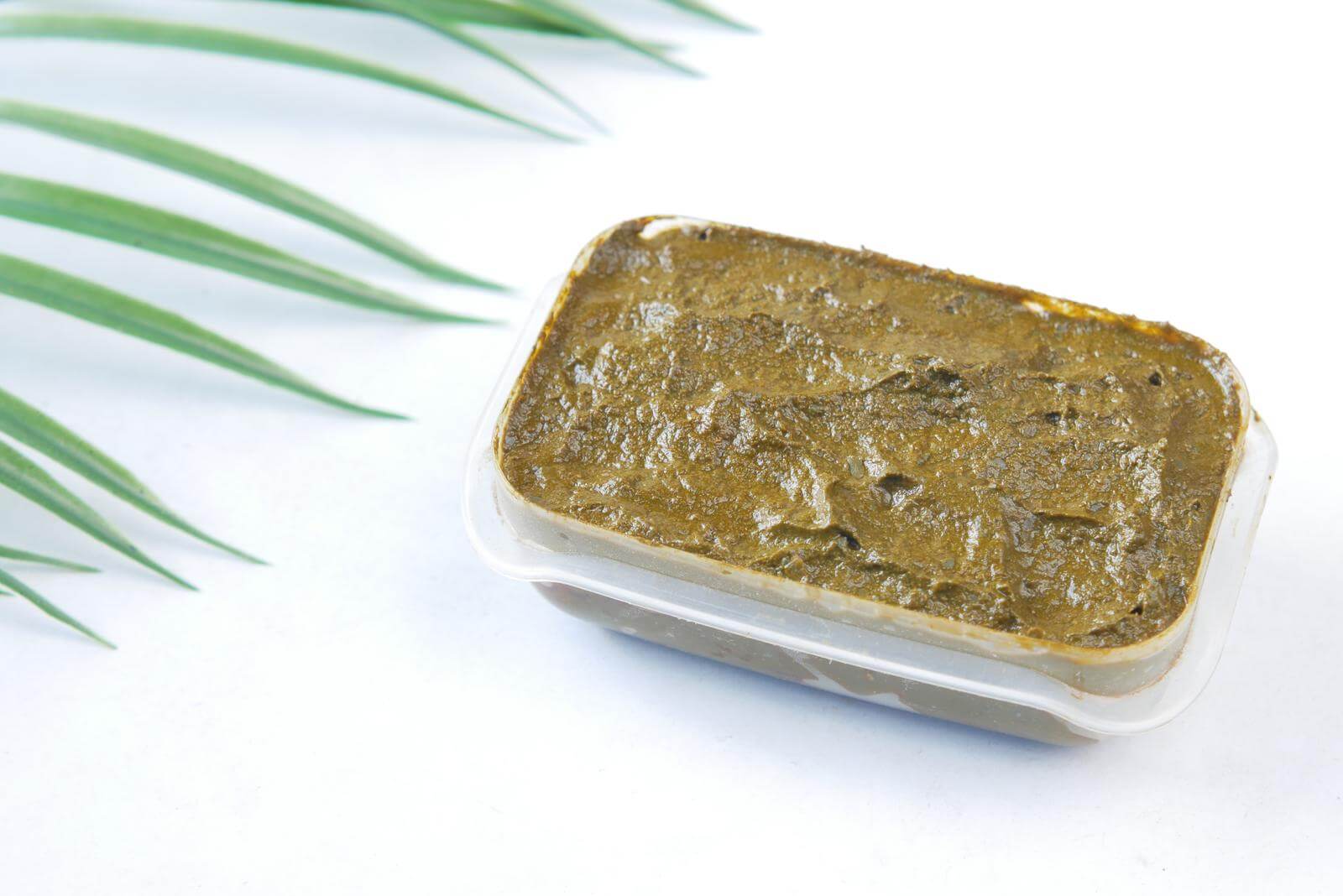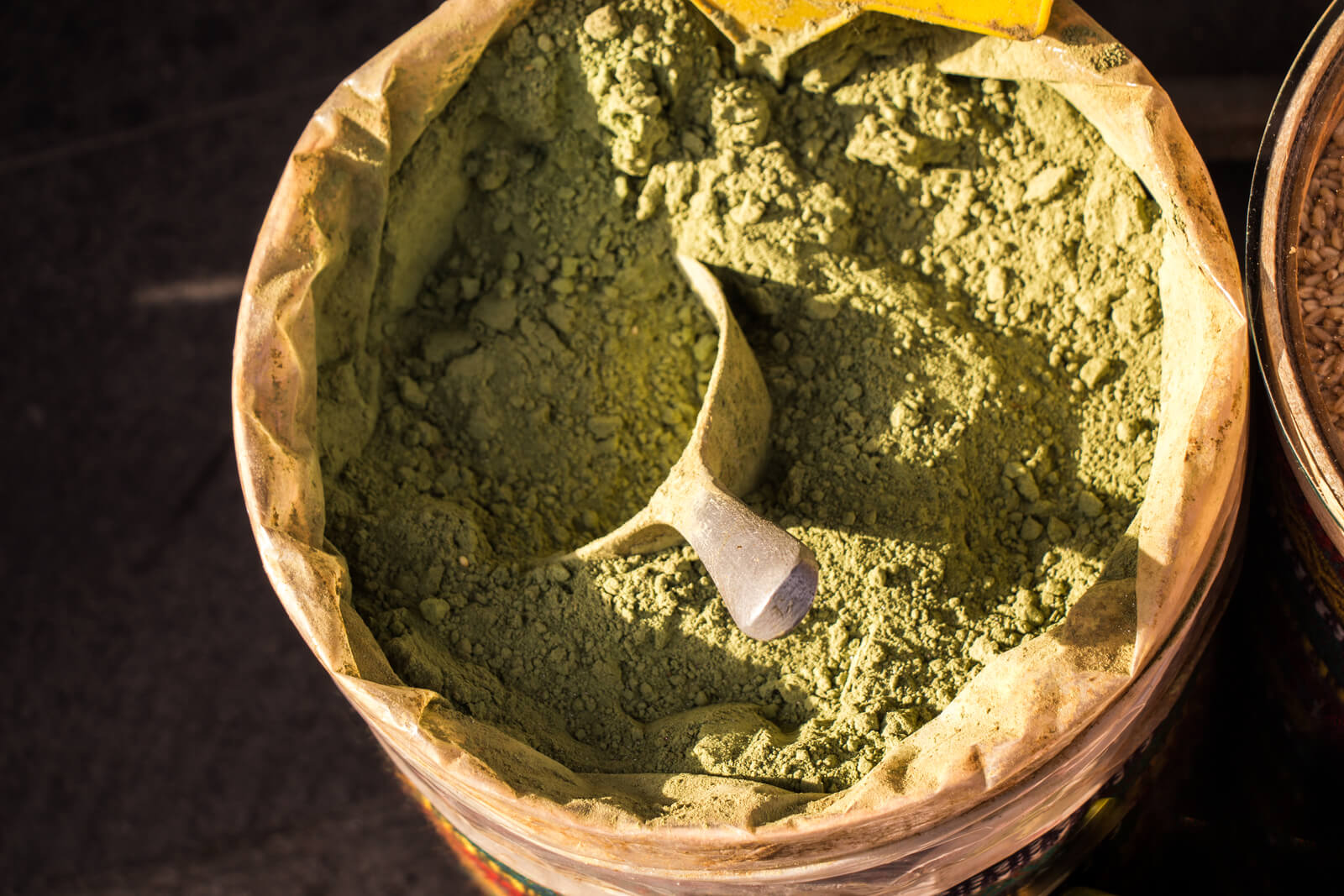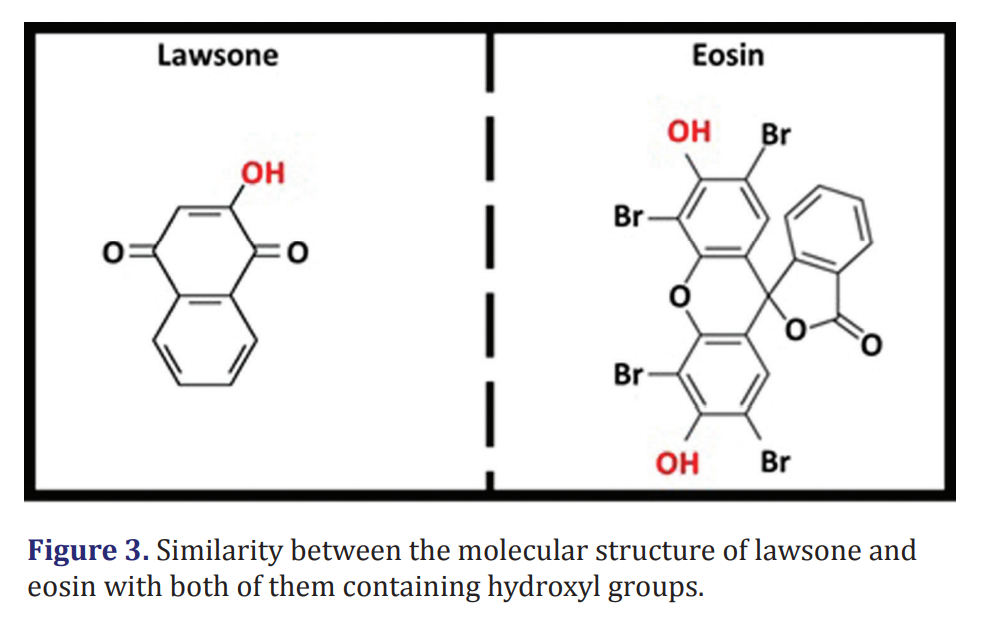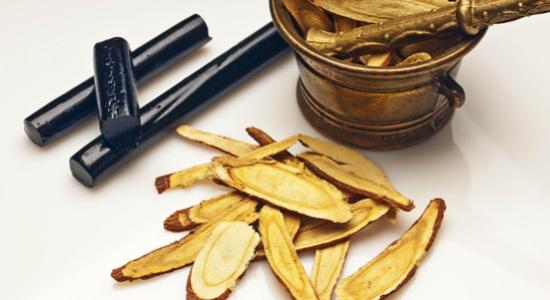See all "Herbs" Section Topics

Henna (Lawsonia inermis); also known as Jamaica mignonette, mignonette, and mignonette tree; has long been used in India by ayurvedic practitioners. When you think about henna, you might associate it with hair dye or tattoos. Henna can be used, and is frequently, as a cosmetic dye in these ways.
However, henna also makes a great antifungal herb you can use as a safe, natural remedy for a Candida problem. In addition to fighting Candida, henna is also able to inhibit a wide array of bacterial pathogens as well.
The primary reason why henna works well as a yeast infection remedy is perhaps due to the presence of lawsone. Lawsone is a natural phytochemical that occurs in henna leaves. If you are using henna for Candida, make sure you use the leaves of this plant.
As research shows, the seeds of the henna plant do not do a good job of controlling Candida. Make sure you get the lawsone rich leaves for your medicinal use of this popular herb.
How to Use Henna for Yeast Infections

Dr. James Duke, in his book The Green Pharmacy, recommended using henna as a decoction to treat a yeast infection naturally. Dr. Duke suggested taking 5 to 7 teaspoons of henna leaves for each cup of water you use and simmering the mixture for about 20 minutes.
Once the henna tea cools, you can use the liquid topically by applying it one to three times a day. You can also make the henna tea into a douche and use it vaginally a few times a day as well.
A 1/2 Day & Yeast is Gone!
Linda Allen suffered from yeast infections for years. Through researching natural medicine & Candida, she found an efficacious solution!
Linda is one expert you want on your side! Let her show you how to get rid of a superficial yeast infection in just 12 hours; AND, keep it gone!
A 60-day, 100% money back guarantee is provided.
Visit Official Site!Henna and Candida Research

One study, published in Saudi Medical Journal [26.1 (2005): 69-72], reports that henna leaves were able to inhibit the growth of Candida albicans. The study found that both fresh and dry henna leaves were able to inhibit the development of this yeast.
Yet, henna seeds, both fresh and dry seeds, were not able to inhibit Candida albicans. This suggests that the leaves are the desired part of the henna plant that will be able to treat your yeast infection. This could be due to the fact that the leaves of henna contain the antifungal compound lawsone; the seeds however, do not contain lawsone.
Another study, published in Der Pharma Chemica [2.6 (2010): 320-326], conducted research on various extracts of henna leaves and one commercial henna preparation that was purchased from a supplier. The study found that the commercial henna product was capable of inhibiting the development of the multidrug resistant strain of Candida albicans used in the study.
Only a 0.51 mg / mL concentration of the commercial henna product was needed to inhibit the strain of Candida albicans. The researchers in the study speculated, that the activity henna leaves had against Candida albicans, was largely due to the presence of lawsone.
The next study on henna’s antifungal efficacy was published in the Research Journal of Biological Sciences [2 (2007): 419-423]. The study used three different solvents: water, methanol, and chloroform. Henna leaves were placed in these solvents, and the resulting extracts were evaluated against several different types of fungi; one of which was Candida albicans.
The study found that the water extract of henna seemed to perform the best against Candida albicans. 75 mg / mL of henna in water inhibited Candida albicans nearly as well as the prescription antifungal Nystatin.
All the extracts in the study inhibited the various strains of fungi they were tested on; indicating that henna is indeed a very competent antifungal.
Eliminate Bacterial Vaginosis & Vaginal Odor
Jennifer O’Brien is one prominent expert on BV that knows how to get rid of vaginal odor. BV is a common infection that you don’t have to put up with.
Jennifer will show you how to naturally eliminate vaginal odor in just 3 days.
A 60-day, 100% money back guarantee is provided.
Visit Official Site!Henna Side Effects

Henna is generally considered safe for use by adults; however, rarely there may be an allergic reaction to this medicinal herb. One group of people should not use henna, or at least not much of it. These are people with glucose-6-phosphate dehydrogenase (G6PD) enzyme deficiency.
There was research published detailing henna’s effect on G6PD siblings in the International Journal of Clinical Practice [58.5 (2004): 530-532]. The study reported that, after the two siblings parents applied henna to their entire body to treat skin lesions, the children developed haemolytic anaemia.
Clair Goodall: Author & Nature Lover
Clair Goodall is a bee-obsessed natural medicine convert from Minnesota. She is one expert you might want to know more about!
Clair will help you protect you and your family from toxic products and chemicals and help you discover solutions from nature.
Also, Clair’s book is backed by a 60-day, 100% money back guarantee
Visit Official Site!A Natural, 12 Hour Yeast Infection Cure

According to a research paper published in Clinical Microbiology Reviews [12.1 (1999): 80-96], Candida species are quite ubiquitous organisms. Candida are most frequently present in the mouth; and, live in 31% to 55% of healthy people. The species that causes approximately 70% to 80% of all Candida infections is C. albicans.
The Chinese Journal of Obstetrics and Gynecology [2011 Jul;46(7):496] reports there appears to be a correlation between intestinal Candida infections and vaginal yeast infections. And, this provides a clue, as to why yeast infections in general, can reoccur.
This study states, in 148 cases of vaginal candida infections, 33.1% of the women were infected in both the intestines and vaginal area. The recurrence rate of yeast infections, in women with simultaneous intestinal infection, was significantly higher than for women who did not have an intestinal infection.
This study concluded that vaginal yeast infections are highly associated with simultaneous intestinal Candida infection.
As research appears to indicate, systemic Candida infections can and do happen. A more systemic Candida infection may primarily get a foothold in the intestines; and cause a wide array of problems. If your yeast infections keep happening, a systemic Candida problem may be why.
One woman who suffered from a systemic Candida infection, for about 12 years, was Linda Allen. The systemic Candida infection that attacked Linda caused a wide range of health problems in addition to yeast infections. Some of these problems, Linda describes in her own words in the following quote:
To be honest, it was hard to pinpoint exactly what was wrong: I wasn’t really sick, but I wasn’t really well either. I had listlessness, fatigue, brain fog, stomach ailments, unexplained rashes, skin infections, and so on. It seemed like every day brought a new challenge.
My energy was sapped and I felt exhausted, which affected my grades and put a big dent in my social life.
Linda Allen’s symptoms included an embarrassing vaginal discharge, severe itching, and burning sensations. Her infections were difficult to deal with, and Linda’s health problems cost her financially as well. Linda states these infections of Candida can become excruciating when they happen as frequently as a menstrual period.
Yet, Linda spent a great deal of time in research; and even questioned health professionals who were kind enough to share some time with her. Linda even tried an array of purported "cures."
Although it took a while, eventually, Linda put together a natural treatment plan she hoped would solve her Candida situation.
After spending about a year refining her new approach, Linda tried her system on herself. It worked amazingly well. Linda even returned to a few medical doctors to get tested for the presence of infections.
These tests revealed all indicators of infection had vanished! Linda was indeed well again, after such a long, difficult journey.
Linda has since published a book detailing how to copy her success. She also includes a 12 hour yeast infection cure that can get rid of a superficial (such as a genital yeast infection or oral thrush) yeast infection in about 12 hours.
Linda’s publisher protects those who get her book with a 60 day, 100% money back guarantee. Linda’s publisher, a subsidiary of the United States based firm Keynetics Incorporated, is a reputable digital retailer that has been around for a long time.
They have great customer service, and make getting a full refund on Linda’s book quick and easy. If you’re not satisfied, you can quickly get all your money back.
If you would like to learn more about Linda’s journey to freedom from Candida, see reviews of others who tried her natural system, or find out more about her efficacious book; you can find more information at Linda Allen’s website.
Author: Mr. Nicholas Gross

Nick Gross is a natural medicine enthusiast who has been researching and writing about natural medicine since 2008. Nick is primarily a web developer but also researches and authors written and video content about natural health. Nick has a bachelor’s degree in Management Information Systems from the University of Northern Iowa.
Disclaimer
The information on this website is not a prescription for anyone. This information is for informational or educational purposes only, and is not a substitute for professional medical advice or consultations with healthcare professionals.
Affiliate Disclosure
Some of the links provided on this website are affiliate links. When a purchase is made through these links, Candida Hub earns money from commission. This helps to keep the website up and helpful to people for free. Thank you for any support!
Stay Up to Date
If you enjoyed this article, consider following / liking our Facebook page. This page is primarily utilized to alert followers of new articles that are put on Candida Hub. Candida related news is also discussed. While you are there, you can see what has been more recently added to Candida Hub.
SOURCES:
- Google Books — Duke, J. A. (1997). The green pharmacy: New discoveries in herbal remedies for common diseases and conditions from the world's foremost authority on healing herbs. Emmaus, Pa: Rodale Press.
- http://www.smj.org.sa/index.php/smj/article/view/5171 — Habbal, Omar A., et al. "In-vitro antimicrobial activity of Lawsonia inermis Linn (henna). A pilot study on the Omani henna." Saudi medical journal 26.1 (2005): 69-72.
- http://derpharmachemica.com/vol2-iss6/DPC-2010-2-6-320-326.pdf — Rahmoun, M. N., et al. "Antimicrobial screening of the Algerian Lawsonia inermis (henna)." Der Pharma Chemica 2.6 (2010): 320-326.
- www.medwelljournals.com/abstract/?doi=rjbsci.2007.419.423 — Saadabi, MA Abdulmoneim. "Evaluation of Lawsonia inermis Linn.(Sudanese henna) leaf extracts as an antimicrobial agent." Res. J. Biol. Sci 2 (2007): 419-423.
- http://www.ncbi.nlm.nih.gov/pubmed/15206514 — Kök, A. N., et al. "Henna (Lawsonia inermis Linn.) induced haemolytic anaemia in siblings." International journal of clinical practice 58.5 (2004): 530-532.
- https://doi.org/10.1128/CMR.12.1.80 -- Fidel, Paul L., Jose A. Vazquez, and Jack D. Sobel. "Candida glabrata: review of epidemiology, pathogenesis, and clinical disease with comparison to C. albicans." Clinical Microbiology Reviews [12.1 (1999): 80-96].
- https://pubmed.ncbi.nlm.nih.gov/22041440/ -- Lin XL, Li Z, Zuo XL. "Study on the relationship between vaginal and intestinal candida in patients with vulvovaginal candidiasis." Chinese Journal of Obstetrics and Gynecology (Zhonghua fu chan ke za zhi). [2011 Jul;46(7):496].







